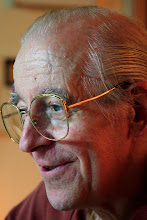After the Korean War (1950-1953) ended, a so-called goblin market opened in Namdaemun Market (南大門 市場, 남대문 시장, Namdaemun Sijang, Great Southern Gate Market) in downtown Seoul. At the goblin market was possible to buy American goods, which were illegally obtained from US military bases or were squirreled away from relief supplies. Since there were few Korean goods manufactured at the time, the goblin market was very popular among those with money.

Namdaemun Market today
It was a time when Koreans joked they would even drink lye if it was made in the USA because the ‘Made in the USA’ tag was a synonym for luxury. Almost anything could be found in the goblin market: from canned food, kitchen tools and clothes to cosmetics and medicine. Many of the goods were things that most Koreans had never seen before. Despite being branded as a hotbed of illegal foreign goods, the goblin market thrived with more than 1200 vendors. But when restrictions on foreign imports were lifted in 1983, the goblin market lost its edge.
The goblin market was a window to the freedom and prosperity of the United States. Flashy American goods inspired Koreans to dream of being rich. Koreans also began to focus on education. Many Korean parents pledged, “I may eat humbly and wear rags, but I will make sure my children get a proper education.”
In his memoir, Known and Unknown, former US Secretary of Defence Donald Rumsfeld (1932- ) said that he sensed “historical amnesia” in Korea, which attained freedom and economic success thanks to the US military’s participation in the Korean War. He wrote that young Koreans need to remind themselves that they are not in a concentration camp in North Korea because many young Americans fought in the ‘forgotten war’ in 1950. As he said, Koreans cannot deny America’s influence, both positive and negative, on Korea’s emergence from the devastation of the war. Rumsfeld certainly had a point here.
But human memory has its limits. According to the ‘memory curve’ by German psychologist Hermann Ebbinghaus (1850-1909), a person will remember only 50 percent of what he saw and learned within one hour. He will forget about 80 percent after a month and the other 20 percent will remain vaguely in one corner of the memory. When Koreans use the 20 percent of their past as a lesson, they make progress. Today, ‘Made in the USA’ does not mean much to most Koreans. But only 50 years ago, they used to fancy and admire everything from America. That’s something Koreans should not ever forget.
Giorgio Olivotto
Photo by Giorgio Olivotto
Seoul, Korea
September 18, 2011
Photo by Giorgio Olivotto
Seoul, Korea
September 18, 2011

Nessun commento:
Posta un commento